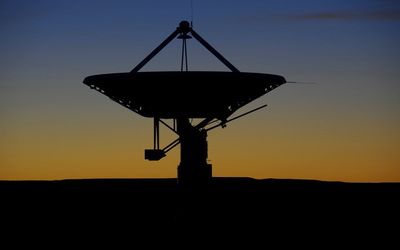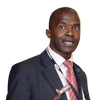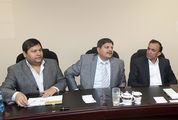SOUTH African scientists are to lead two of the 10 teams that will design the Square Kilometre Array (SKA) radio telescope, the SKA Organisation said on Monday.
Local scientists are also deeply involved in the systems engineering for many of the other teams, including the consortium charged with preparing for the procurement of the SKA dishes, according to SKA SA’s associate director for science and engineering Justin Jonas.
"Whatever the SKA looks like in the end it will be designed by South Africans," he said. "We made a conscious decision to push our engineering capacity, and we plan to increase our engineering staff by a fifth," he told Business Day.
Seven South African companies as well as two local universities are involved in the design work at this stage, according to the SKA SA GM for science computing and innovation Jasper Horrell.
The SKA will be the world’s largest telescope, with a total collecting area of 1km². It will eventually combine the radio signals received from thousands of large dishes and millions of radio receivers in Africa and Australia. The SKA will be able to detect very faint radio signals emitted shortly after the Big Bang, and may help answer questions about the nature of dark matter and dark energy.
Yesterday’s announcement follows a call from the SKA Organisation headquartered at Jodrell Bank Observatory near Manchester in the UK, for proposals for the three-year design phase of the telescope. In line with other large science projects, such as the Large Hadron Collider, the design of the SKA has been broken up into 10 "work packages", each managed by an international team of experts.
"That we have been able to pull together a team of some of the world’s best experts, most prestigious institutions and major companies reflects the passion and ambitions of the scientific and engineering communities to work on a world-class project of the scale of the SKA," said SKA Organisation director-general Phil Diamond.
The global partners have committed €120m to the three-year design phase. It will involve more than 350 scientists from nearly 100 institutions in 18 countries.
"Each element of the SKA is critical to the overall success of the project ... this multidisciplinary team of experts has three years to come up with the best technological solutions for the final design of the telescope so we can start tendering for construction in 2017 as planned," said SKA board chairman Prof John Womersley. One of the big challenges facing the teams is ensuring their various pieces of the SKA jigsaw puzzle fit together.
Richard Lord from the SKA SA office will play a key role in this effort, charged with the "assembly, integration and verification" element. It involves the planning for activities at the sites needed to incorporate the SKA into existing infrastructure. "It’s extremely exciting to be involved in probably the biggest scientific endeavour in the radio astronomy community," he said.
The South African infrastructure site (Infra-South A) is headed up by SKA SA’s Tracy Cheetham, who will be charged with all the infrastructure-related work needed to deploy and operate the telescope.
The SKA organisation has 10 member countries: Australia, Canada, China, Germany, Italy, New Zealand, South Africa, Sweden, the Netherlands and the UK. India is an associate member.

A silhouette of the KAT-7 satellite. Picture: MAIK WOLLEBEN
SOUTH African scientists are to lead two of the 10 teams that will design the Square Kilometre Array (SKA) radio telescope, the SKA Organisation said on Monday.
Local scientists are also deeply involved in the systems engineering for many of the other teams, including the consortium charged with preparing for the procurement of the SKA dishes, according to SKA SA’s associate director for science and engineering Justin Jonas.
"Whatever the SKA looks like in the end it will be designed by South Africans," he said. "We made a conscious decision to push our engineering capacity, and we plan to increase our engineering staff by a fifth," he told Business Day.
Seven South African companies as well as two local universities are involved in the design work at this stage, according to the SKA SA GM for science computing and innovation Jasper Horrell.
The SKA will be the world’s largest telescope, with a total collecting area of 1km². It will eventually combine the radio signals received from thousands of large dishes and millions of radio receivers in Africa and Australia. The SKA will be able to detect very faint radio signals emitted shortly after the Big Bang, and may help answer questions about the nature of dark matter and dark energy.
Yesterday’s announcement follows a call from the SKA Organisation headquartered at Jodrell Bank Observatory near Manchester in the UK, for proposals for the three-year design phase of the telescope. In line with other large science projects, such as the Large Hadron Collider, the design of the SKA has been broken up into 10 "work packages", each managed by an international team of experts.
"That we have been able to pull together a team of some of the world’s best experts, most prestigious institutions and major companies reflects the passion and ambitions of the scientific and engineering communities to work on a world-class project of the scale of the SKA," said SKA Organisation director-general Phil Diamond.
The global partners have committed €120m to the three-year design phase. It will involve more than 350 scientists from nearly 100 institutions in 18 countries.
"Each element of the SKA is critical to the overall success of the project ... this multidisciplinary team of experts has three years to come up with the best technological solutions for the final design of the telescope so we can start tendering for construction in 2017 as planned," said SKA board chairman Prof John Womersley. One of the big challenges facing the teams is ensuring their various pieces of the SKA jigsaw puzzle fit together.
Richard Lord from the SKA SA office will play a key role in this effort, charged with the "assembly, integration and verification" element. It involves the planning for activities at the sites needed to incorporate the SKA into existing infrastructure. "It’s extremely exciting to be involved in probably the biggest scientific endeavour in the radio astronomy community," he said.
The South African infrastructure site (Infra-South A) is headed up by SKA SA’s Tracy Cheetham, who will be charged with all the infrastructure-related work needed to deploy and operate the telescope.
The SKA organisation has 10 member countries: Australia, Canada, China, Germany, Italy, New Zealand, South Africa, Sweden, the Netherlands and the UK. India is an associate member.





















Change: -1.41%
Change: -1.63%
Change: -1.53%
Change: -1.58%
Change: -1.47%
Data supplied by Profile Data
Change: -0.64%
Change: 0.12%
Change: -1.41%
Change: 0.00%
Change: 0.10%
Data supplied by Profile Data
Change: 0.77%
Change: -0.33%
Change: 0.58%
Change: 0.96%
Change: 1.16%
Data supplied by Profile Data
Change: 0.73%
Change: 0.92%
Change: 0.19%
Change: 0.50%
Change: 0.05%
Data supplied by Profile Data